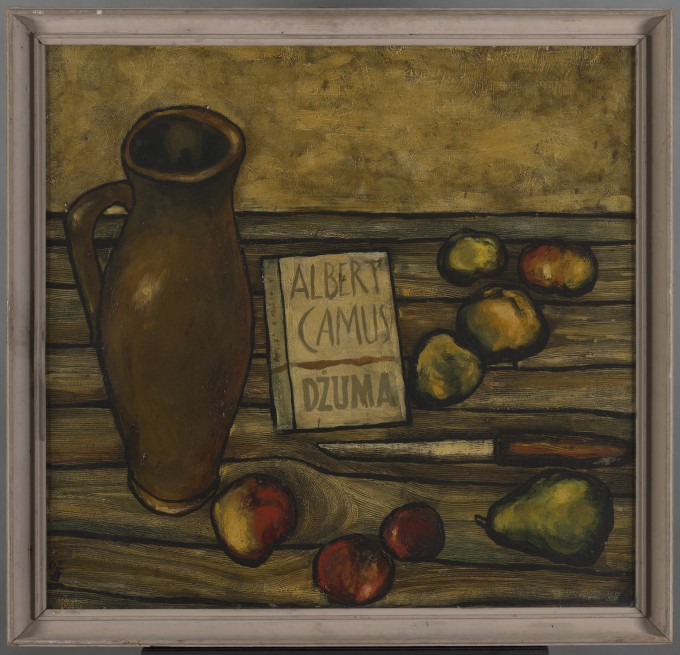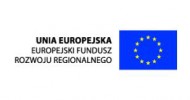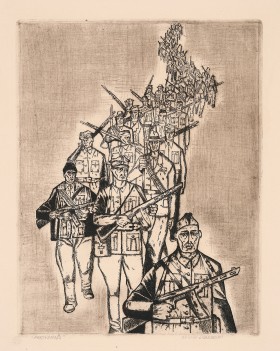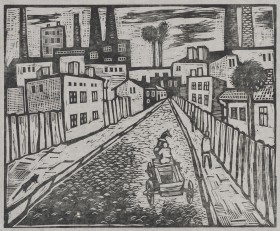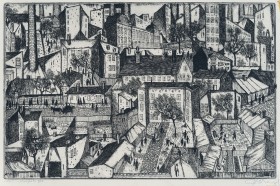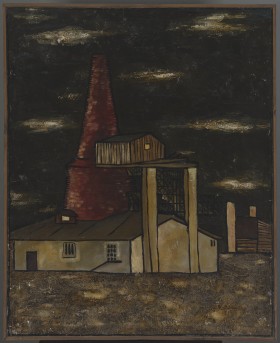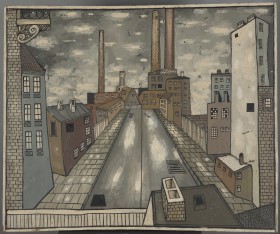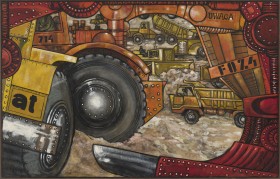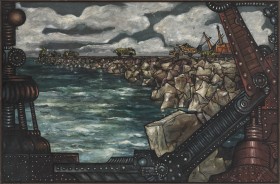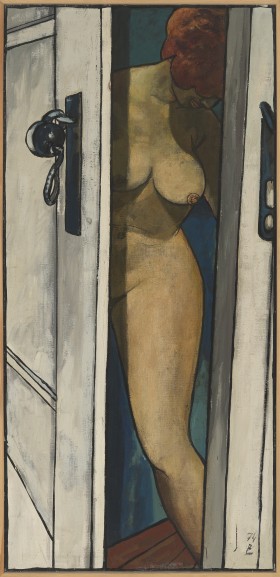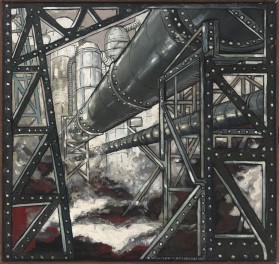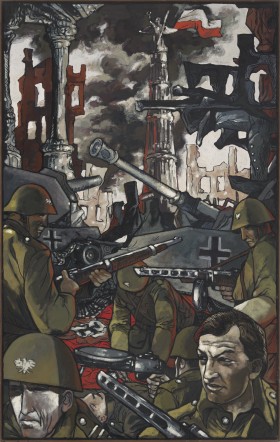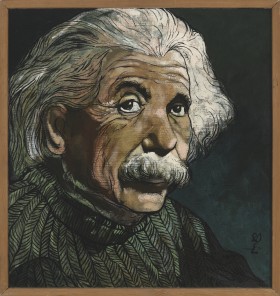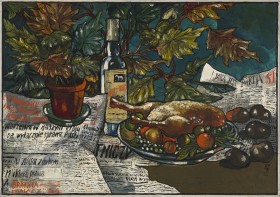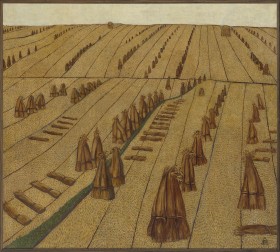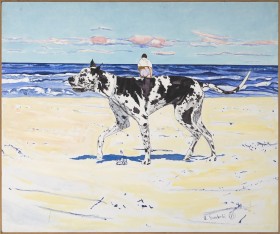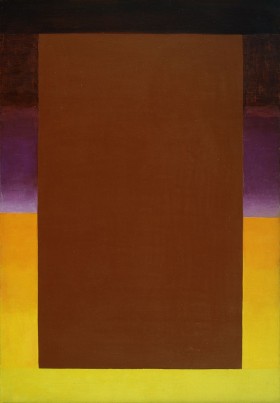Still Life
- type of object: painting
- date: 1962
- material/technique: oil, fibreboard
- dimensions: 75,5 x 79 cm
- inventory No.: M-188
- image licensed under: CC BY-SA
Benon Liberski’s recognisable style was formed around 1960. In 1962, he joined the Realist Painters Group, of which he was, along with Jerzy Krawczyk, the most prominent representative. The formation of this grouping is sometimes regarded as an attempt to revive socialist realism in Poland. Such labels, however, do not fit Liberski’s painting, who was an open-minded artist — he exhibited with both realists and modern painters. The Still Life described was also created that year. It is a monochromatic painting, treated in a Cézanne-like manner, devoid of the artist’s characteristic violent juxtapositions of colour. The presence of politically charged elements in Liberski’s paintings — flags, banners or newspapers — derives from socialist realist painting. In this still life instead, we find a reference to The Plague by Albert Camu, an existentialist associated with the Thaw. The painting is in the tradition of vanitas still lifes — fresh fruit and a jug of water contrast with the inscription ‘plague’. Other compositions are similar in character. Sometimes the vegetables lie on newspapers with the headline ‘the war continues’, other times on magazines full of warnings. Robert Graves’ I, Claudius and Camus’ Exile and the Kingdom also appear in subsequent images.
Karolina Zychowicz
translated by Paulina Bożek
